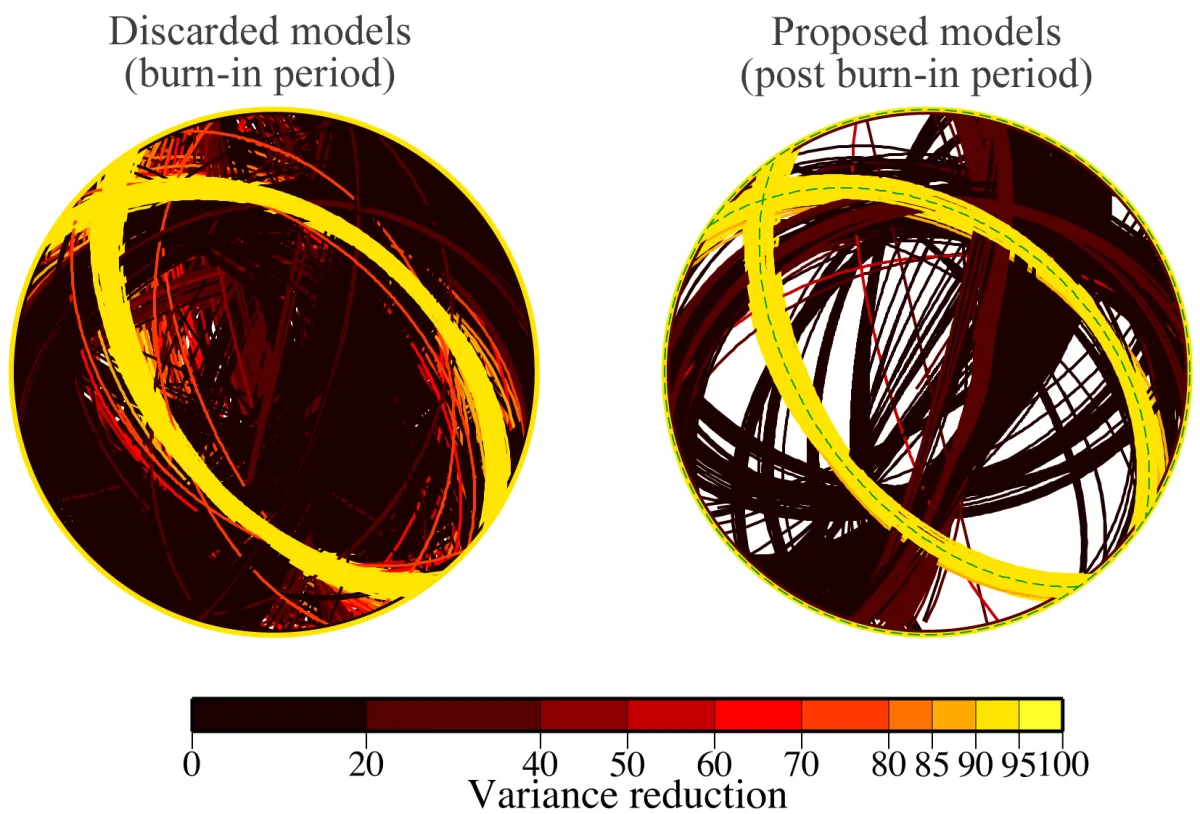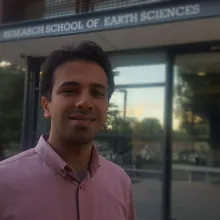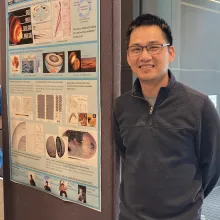Insights Into Earthquake Source Physics: Moment Tensor Inversion
Moment tensors in seismology provide a theoretical framework to understand physical mechanisms of earthquakes (how they are generated in their source); in fact, apart from tectonic and volcanic earthquakes, the same framework is used to characterise explosions, landslides, meteorite impacts and other phenomena.
Project status
Content navigation
About

BACKGROUND AND MOTIVATION
Improved structural models of the Earth and the knowledge about seismic wave propagation allow seismologists to study how earthquakes are generated. The surrounding of Australia is an exciting environment for such studies, due to a great variety of physical mechanisms responsible for seismic waves recorded by seismographs deployed by Seismology and Mathematical Geophysics group and Geoscience Australia. At the same time, the Australasian region is at risk from both large earthquakes and tsunamis. Rapid and reliable determination of parameters such as depth and orientation of earthquake fault planes in real time is vital for an effective response.
Seismic moment tensor is a theoretical framework that uses generalised force couples to understand ground motion observations in the far field, and consequently, physical mechanisms of earthquakes and other sources. Although the radiation of most tectonic earthquakes can be described with the so-called double-couple configurations of forces, a full seismic moment tensor representation is more complete form of a mathematical description of seismic sources, especially in non-tectonic environments. Of particular interest and curiosity are seismic events with anomalous radiation and puzzling focal mechanisms, such as volcanic earthquakes, icequakes, mid-ocean ridge events or explosions. Various computational methods are used to reveal statistically significant non-double-couple components and model complex finite sources.
We have so far made contributions in several areas, including the following: we showed the existence of strong volumetric components in volcanic earthquakes, which indicated a direct relationship between the seismicity and hydrothermal or magmatic processes. Following from this work, we proposed a possible physical mechanism that explains anomalous radiation from Icelandic volcanic earthquakes, and presented a novel way to resolve the kinematics of a volcanic caldera drop. We have also demonstrated that it is necessary to use 3-D structural models of the Australian lithosphere when inverting for source parameters of teleseismic and regional earthquakes. On the geophysical inference front, we have recently developed a new technique for seismic moment tensor inversion, treating the noise in the data as a free parameter in the inversion (hierarchical Bayesian framework). The technique has been applied to analyses of earthquake source mechanisms and their uncertainty in various tectonic settings, including California (Long Valley Caldera and the Geysers), a DPRK nuclear explosion and Aso volcano in Japan. We have also extended the technique to study small earthquakes, and we have recently shown that exploiting higher frequencies in moment tensor inversion is a way to study shallow earthquakes.
NATURE OF PROJECT(S): computational (possibly running software on a desktop or more capable computers such as Terrawulf or National Computational Infrastructure), numerical, observational, interpretational (e.g. see some of our recent papers on this topic here and here).
ESSENTIAL BACKGROUND: PHYS3070 (Physics of the Earth)
POSSIBLE PROJECT(S):
- Utilising three dimensional (3-D) instead of one dimensional (1-D) Earth structure models of the Australasian region to determine earthquake source parameters in a specific region surrounding Australia. Students (most appropriate for MSc and PhD students) will work on various aspects of forward and inverse seismic waveform modelling, from possibly contributing to a library of 3-D and 1-D Green’s functions (Earth's structure responses) for a specific seismogenic zone surrounding Australia that can be determined depending on interest, contributing to the 3D-moment-tensor catalogue, and testing various seismic moment tensor inversions in the wider Australasian region. This project would greatly improve the quality of information inferred from seismic waveform data by using 3-D structural models of Earth and also provide valuable insight into the earthquake generation process. The science developed would underpin automated determination of characteristics of earthquakes and play a key part in efforts to mitigate the impact of tsunamis. This would be of immediate benefit for the continuous monitoring of the earthquake belts around Australia, since it would provide a rapid estimate of the nature of any significant seismic energy.
- Further theoretical development of moment tensor inversion within the Bayesian framework, with a rigorous treatment of data noise and uncertainty characterisation (appropriate for Honours and PhD students).
- Modelling of volcanic and other non-double-couple earthquakes (see examples in the links shown above).
- Nuclear non-proliferation seismology (see examples here and here).
Highly motivated students with backgrounds in geophysics, physics, computer sciences, engineering or mathematics are invited to join this project. The projects will prepare students for solving complex, real-world problems and for future career in science.




